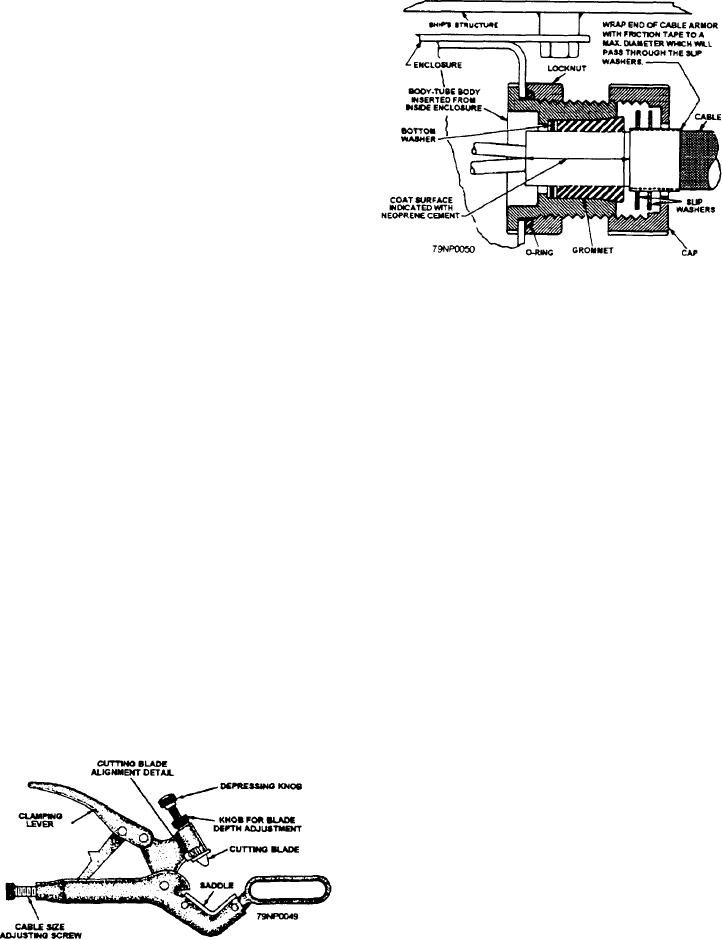
remove the armor (if installed) and impervious sheath,
trim the cable, and finish the end.
1. Determine the correct length by using the
following procedure:
Form the cable run from the last cable support
to the equipment by hand. Allow sufficient slack and
bend radius to permit repairs without renewal of the
cable.
Carefully estimate where the armor, if
applicable, on the cable will have to be cut to fit the
stuffing tube (or connector) and mark the location with
apiece of friction tape. Besides serving as a marker, the
tape will prevent unraveling and hold the armor in place
during cutting operations.
Figure 24.--Representative nylon stuffing tube installations.
Determine the length of the cable inside the
equipment, using the friction tape as a starting point.
the armor terminates. Use the cable stripper for this job.
Whether the conductors go directly to a connection or
Do not take a deep cut because the conductor insulation
form a laced cable with breakoffs, carefully estimate the
can be easily damaged. Flexing the cable will help
length of the longest conductor. Then add
separate the sheath after the cut has been made. Clean
approximately 2 1/2 times its length, and mark this
any paint from the surface of the remaining impervious
position with friction tape. The extra cable length will
sheath exposed by the removal of the armor (this paint
allow for mistakes in attaching terminal lugs and
will conduct electricity).
possible rerouting of the conductors inside the
equipment. You now know the length of the cable and
4. Once the sheath has been removed, trim the
can cut it.
cable filler with a pair of diagonal cutters.
2. Next the armor, if installed, must be removed.
5. There are several methods for finishing and
Use a cable stripper of the type shown in figure 2-3. Be
protecting cable.
careful not to cut or puncture the cable sheath where the
The proper method for finishing and
sheath will contact the rubber grommet of the nylon
stuffing tube (fig. 2-4). The uses and construction of
protecting cable ends not requiring end sealing is shown
stuffing tubes will be described later in this chapter.
in figure 2-5. For cables entering enclosed equipment
(such as connection boxes, outlet boxes, fixtures, etc.),
3. Remove the impervious sheath, starting a
use the method shown in figure 2-5, view A.
distance of at least 1 1/4 inches (or as necessary to fit
the requirements of the nylon stuffing tube) from where
An alternate method (when synthetic resin
tubing is not readily obtainable) is to apply a coat of
air-drying insulation varnish to the insulation of each
conductor as well as to the crotch of the cable. The end
of the insulation on each conductor is reinforced and
served with treated glass cord, colored to indicate proper
phase marking.
For watertight cables entering open
equipment (such as switchboards), use the method
shown in figure 2-5, view B. An alternate method is
shown in figure 2-5, view C.
For nonwatertight cables entering open
equipment, use the methods as shown in figure 2-5,
Figure 2-3.--Cable stripper.
views D and E.
2-8

